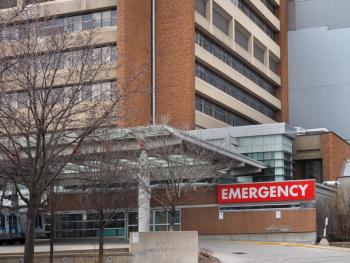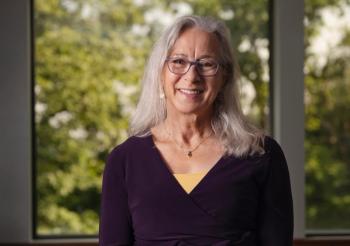
Why hospitals should pay attention to negative reviews on Yelp
More than half of all reviews are negative, according to a new study from the University of Pennsylvania. Hospital ratings tumbled in the pandemic and haven’t fully recovered.
Hospitals routinely survey patients about their experiences, but a new study suggests they should also check their reviews on Yelp.
But they may not love what they see.
The majority of hospital and healthcare facility reviews on Yelp are negative, according to a new study by the University of Pennsylvania. The findings were published Friday morning by
Consumers go to Yelp for recommendations on restaurants and bars, but plenty share their reviews on hospitals and health systems. Penn researchers examined more than 1.4 million Yelp reviews from 2014 through 2023. They looked at reviews of hospitals, medical centers, urgent care clinics, emergency departments, rehabilitation centers and physicians.
Healthcare facility reviews have tumbled since the COVID-19 pandemic, and they haven’t recovered. While the authors point out that online customer reviews can be dominated by those with complaints, it’s worth noting that the majority of hospital reviews on Yelp were generally positive before the pandemic emerged.
In March 2020, 54.3% of reviews on Yelp were positive, but that number has dropped to 47.9%. Since the second half of 2021, positive reviews haven’t surpassed 50%, according to Penn’s analysis.
Neil Sehgal, the lead author of the study and an associate fellow in the Penn Leonard Davis Institute of Health Economics, tells Chief Healthcare Executive® that Yelp reviews offer important feedback that hospitals and health systems shouldn’t ignore.
“I think Yelp reviews can capture the kind of raw, unfiltered feedback that traditional surveys might miss, like personal stories or frustrations,” Sehgal says.
“These are just open-ended voluntary reviews, where people are just writing in natural language about their experience, and so I think they give us a broader picture, because they're written voluntarily, and often highlight unique aspects that traditional surveys, the people who are designing surveys, might just not have thought to ask before,” he adds.
Customers cited insurance and billing issues as top problems, while many also pointed to customer service and staff behavior, according to the study.
“Insurance and billing issues was the single largest thing that changed after COVID among negative reviews,” Sehgal says.
Researchers also found different concerns among racial and ethnic groups. Healthcare facilities in areas with higher concentrations of Black and Hispanic records saw an increase in negative reviews regarding billing and insurance. Providers in areas with a greater percentage of white residents were more likely to see complaints about lengthy wait times, the study found.
Rural healthcare facilities were more likely to see negative reviews than urban providers, the study found. Patients in rural communities had increased complaints about medication and prescription management.
Consumers had much more favorable reviews of hospitals before the pandemic, and the study includes more than six years of Yelp comments before the pandemic. Before the pandemic, there wasn’t a single quarter where positive reviews fell below 50%, Sehgal says.
“The majority of experiences people are having are positive,” he says of the pre-pandemic period. “And then after the pandemic, there's a startling drop.”
Customers' reviews have improved a bit since the worst of the pandemic, he says.
“It is on an upward trend,” Seghal says. “It's just not back to where it was before COVID.”
Facilities in rural areas, communities with the highest percentage of Black residents and providers serving the highest share of white patients experienced the biggest drop in positive reviews, researchers found.
Organizations with a high percentage of Hispanic residents also saw fewer positive ratings, but the decline wasn’t as sharp as in other groups. Researchers say they aren’t sure of the reasons for the less negative reviews among Hispanic patients and suggested the question warrants more study. It’s possible providers in those areas had more stability in the pandemic or Hispanic patients used Yelp differently than others.
Researchers noted that certain communities, including rural areas and communities with larger populations of Black residents, had healthcare challenges that worsened during the pandemic. Since different communities cited different reasons for complaints, health systems will need to consider the specific needs of individual facilities to address certain problems.
For example, Black patients had a high number of concerns with insurance and billing problems, so providers in Black communities should consider examining billing processes to see where they could be improved, the researchers said.
Anish Agarwal, MD, a co-author of the study and an assistant professor of emergency medicine at the University of Pennsylvania, said in a statement that healthcare organizations looking to improve their patient satisfaction can’t try a one-size-fits-all approach.
“Many of the themes have clear overlap but are distinct across geographic areas, which is interesting and begins to highlight a growing need for health systems and facilities to be more intentional and tailored to their local communities’ needs - and opinions,” Agarwal said in a statement accompanying the study.
Other studies have shown
On a positive note, the Penn study found fewer complaints about the cleanliness in hospitals.
“We thought that was pretty surprising,” Sehgal says. “You would have thought that it would have been something that people were complaining about or were talking about, but I guess people had other concerns.”
















































